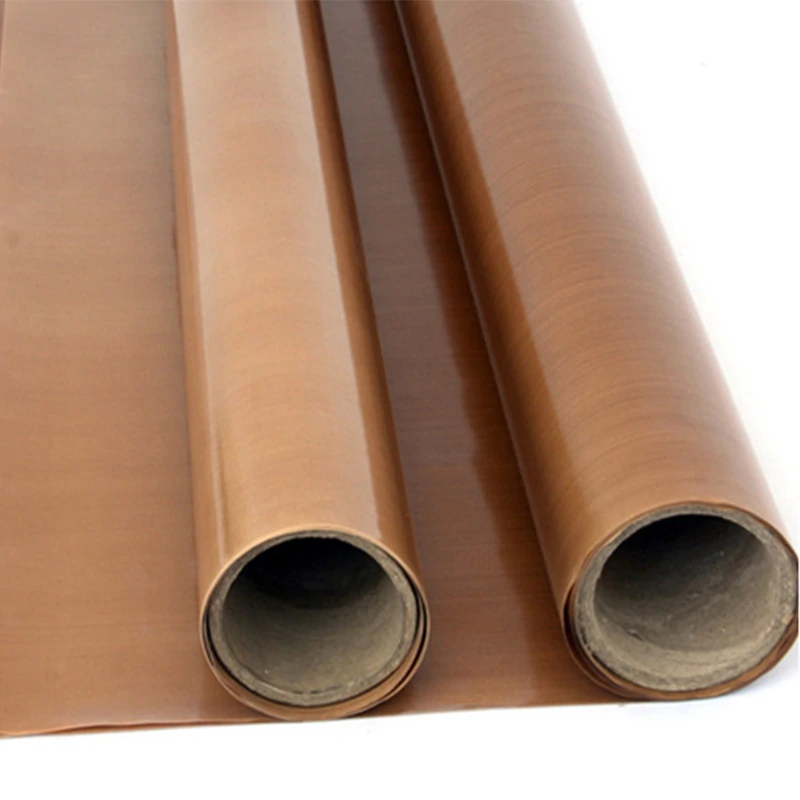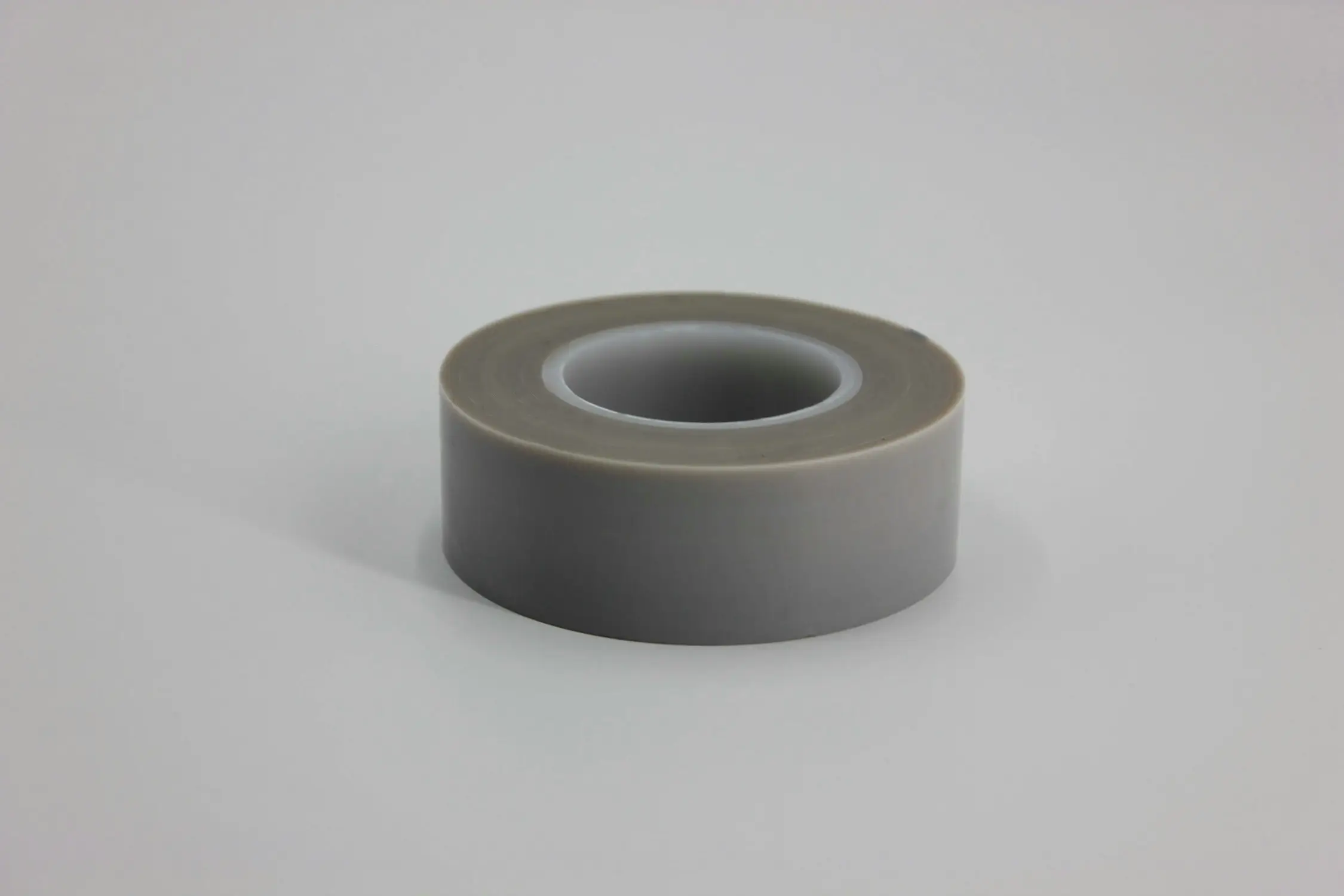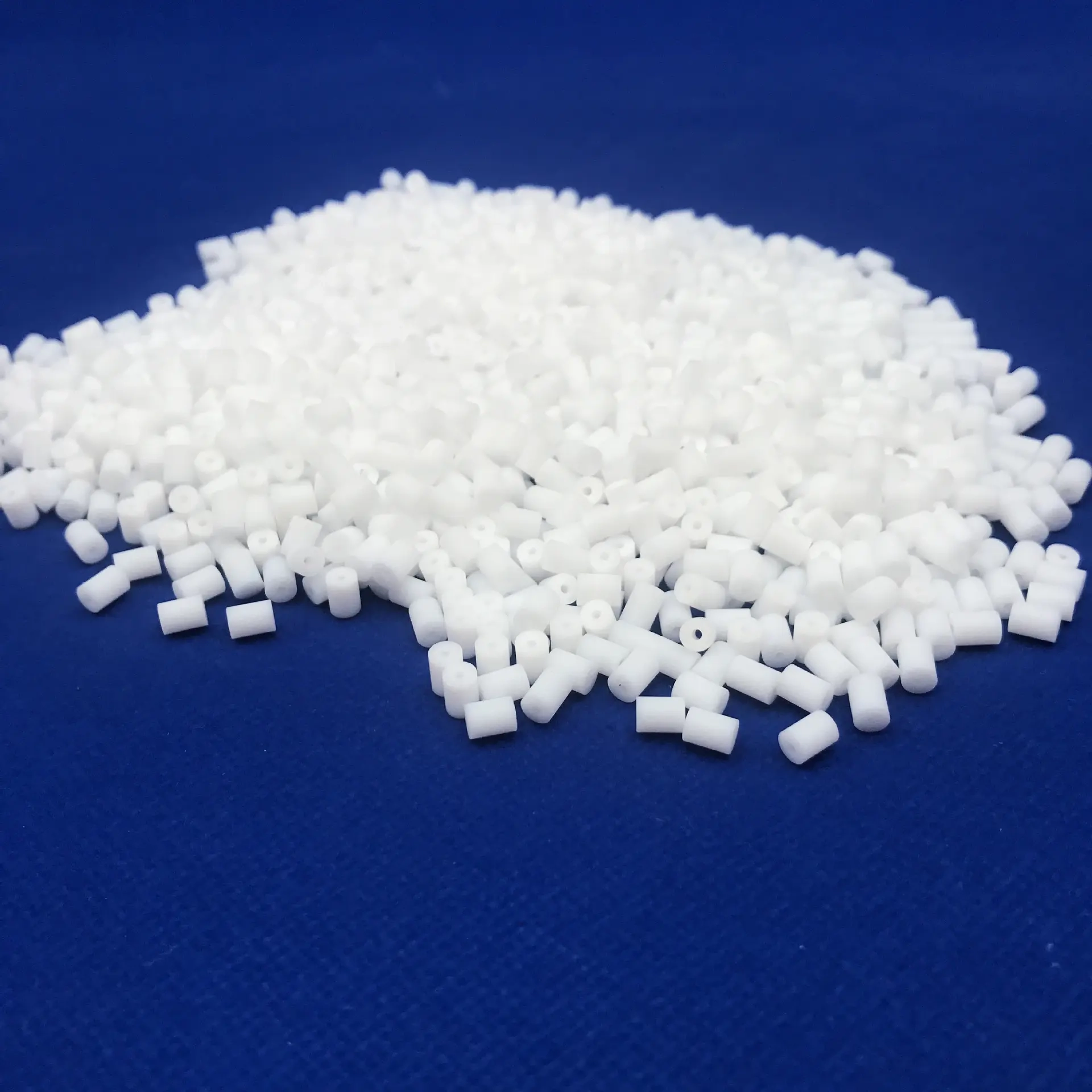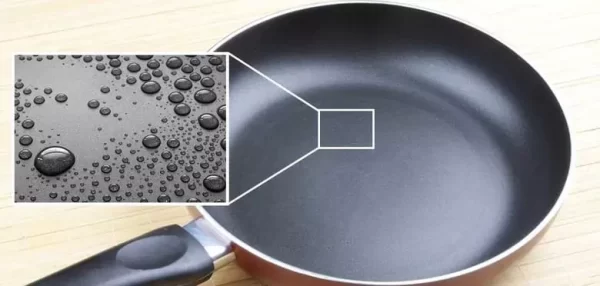Cooking is an art, and the right tools can make all the difference. Picture yourself in the kitchen, creating culinary masterpieces with your favorite nonstick pans. Eggs glide effortlessly, and cleanup is a breeze. But, do you know what makes these pots and pans so special? How can you be sure if your cookware is truly made with Teflon?
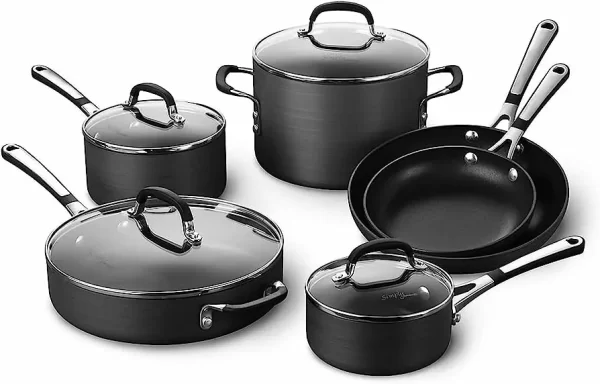
pots and pans
Check the Manufacturer’s Label:
The easiest way to determine if your cookware features a Teflon coating is to look for specific keywords: “Teflon” or “PTFE.” Reputable manufacturers proudly label their products as such. So, when you’re shopping for nonstick cookware, make it a habit to seek out these telltale labels on the packaging or the cookware itself.
Examine the Cookware’s Surface:
Visual cues can be a dead giveaway. Teflon coatings are renowned for their velvety smooth, glossy surface. When you run your fingers over it, you’ll feel an unmistakable silkiness. This unique nonstick surface is what makes Teflon pans a joy to cook with and a breeze to clean.
Observe the Color:
Teflon coatings typically come in shades of white or cream. While some manufacturers add artistic flair with different colors or patterns, the base layer remains distinctly white or off-white. This color is a hallmark of authentic Teflon pans.
Be Mindful of Scratches:
Teflon is robust but not impervious to abrasion. If you notice any scratches or chips on your cookware, revealing a different color underneath, it may indicate that the coating isn’t Teflon. Teflon’s strength lies in its resistance to sticking, not scratching.
Heat Resistance:
One of Teflon’s standout qualities is its high heat resistance. Authentic Teflon pans can handle moderate to high temperatures without breaking a sweat. To put it into perspective, Teflon starts to show signs of stress at temperatures above 500°F (260°C). If your cookware exhibits blistering, bubbling, or peeling at normal cooking temperatures, it’s time to question its authenticity.
Health Matters – PFOA Free:
A significant health benefit of genuine Teflon cookware is that it’s typically PFOA-free (Perfluorooctanoic Acid). This means your Teflon pans are less likely to release harmful chemicals when exposed to heat. PFOA is a substance associated with health concerns, so choosing PFOA-free cookware is not only convenient but also a safer choice for your kitchen.
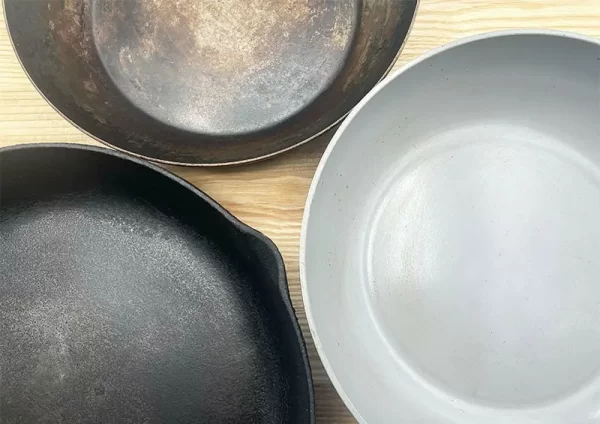
teflon
Stainless Steel Pan with Teflon Coating:
While Teflon is celebrated for its nonstick prowess, it is often layered onto stainless steel pans to combine the best of both worlds. These pans offer exceptional durability, even heat distribution, and the added benefit of a nonstick surface.
Easy Cleanup:
One of Teflon’s standout features is its easy-to-clean nature. The nonstick surface ensures that even the toughest residues wipe away effortlessly, reducing the time and effort you spend scrubbing your pots and pans. This convenience is a game-changer in the kitchen, especially during busy mealtimes.
The Science Behind Teflon:
To truly appreciate Teflon and its exceptional properties, it’s helpful to understand a bit of the science behind it. Teflon, short for polytetrafluoroethylene (PTFE), is a synthetic fluoropolymer. It was developed by chemists at DuPont in the 1930s and has since revolutionized the cookware industry.
The molecular structure of PTFE is such that it possesses an incredibly low coefficient of friction. In layman’s terms, this means that nothing wants to stick to it, making it ideal for nonstick applications. It’s also highly resistant to chemicals and has impressive electrical insulation properties, which is why Teflon is not only found in cookware but also in various industrial applications.
Teflon’s Heat Resistance:
When it comes to heat resistance, Teflon is a star performer. It can withstand temperatures well above what you’d typically use in your kitchen. In fact, it doesn’t begin to deteriorate until it reaches temperatures of around 500°F (260°C) or higher. This heat resistance makes it perfect for a wide range of cooking methods, from searing to baking.
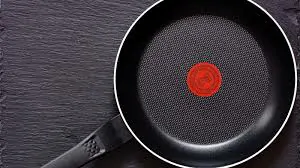
teflon pans
Unique Selling Points of Teflon:
While many websites discuss the basics of Teflon, here are some unique selling points that set this nonstick wonder apart:
- Exceptional Durability: Teflon-coated cookware is known for its longevity. When used and cared for properly, it can last for years, providing excellent value for your investment.
- Versatility: Teflon’s nonstick properties extend beyond just frying pans. It’s used in various kitchen utensils, bakeware, and even as a coating for waffle irons and sandwich makers.
- Even Heating: Stainless steel pans with a Teflon coating combine the durability of stainless steelwith the nonstick ease of Teflon. This means you get even heating and precise cooking control.
- Reduced Oil Usage: Teflon’s nonstick surface allows you to cook with less oil or butter, promoting healthier cooking without sacrificing flavor.
- Wide Availability: Teflon-coated cookware is widely available in various price ranges, making it accessible to cooks of all budgets.
- Environmental Benefits: Some Teflon cookware is designed for recyclability, reducing its impact on the environment.
The Importance of PFOA-Free Cookware:
In recent years, there has been growing concern about the potential health effects of perfluorooctanoic acid (PFOA), a substance used in the production of some nonstick coatings, including older versions of Teflon. While PFOA itself is not present in the final Teflon product, there were concerns about its release during manufacturing.
As you embark on your culinary adventures, knowing whether your pots and pans are made with Teflon is a valuable piece of knowledge. Armed with the ability to identify Teflon coatings through labels, visual cues, and understanding its heat resistance, you can confidently enjoy its benefits in your kitchen. The health benefits, durability, and unique selling points of Teflon make it a top choice for both professional chefs and home cooks.
So, the next time you create a delightful omelet that slides effortlessly out of your Teflon pan, savor the moment, knowing you’ve got a kitchen companion that’s safe, reliable, and designed to make your cooking experience truly exceptional.


